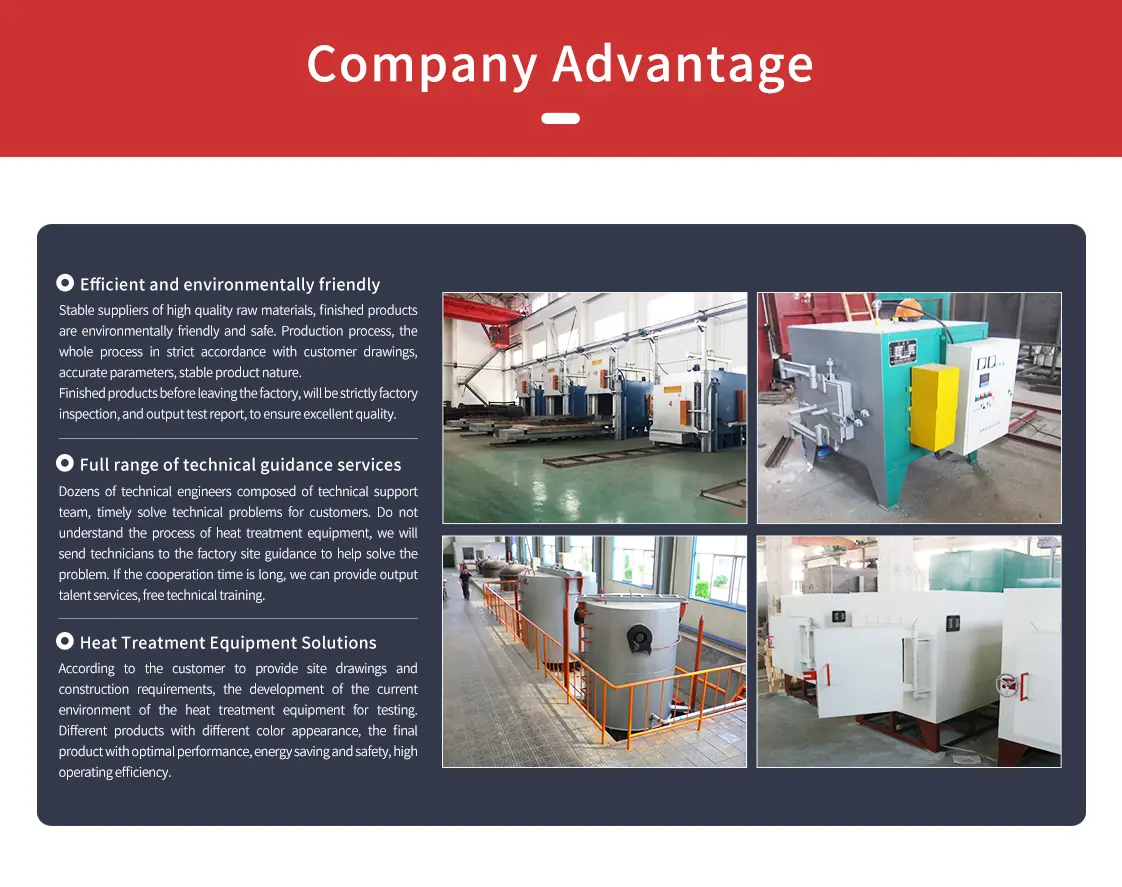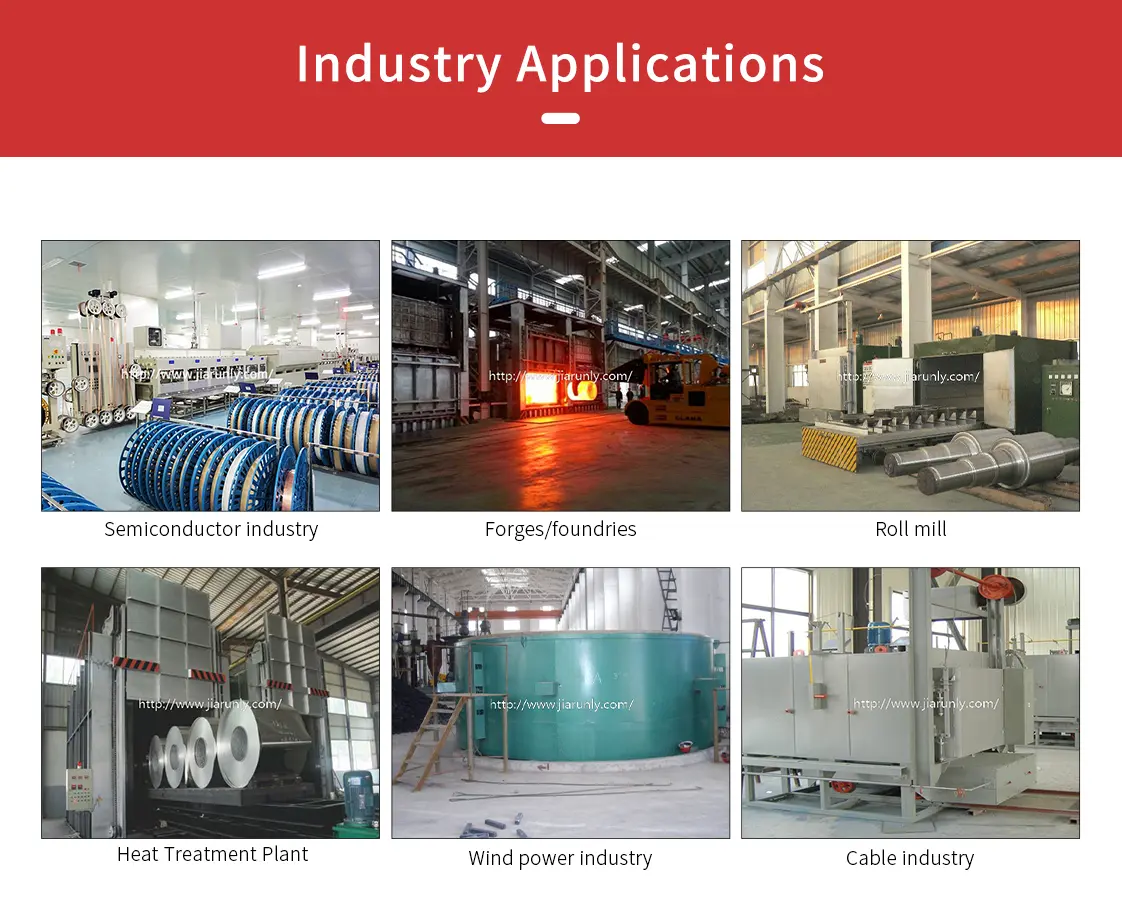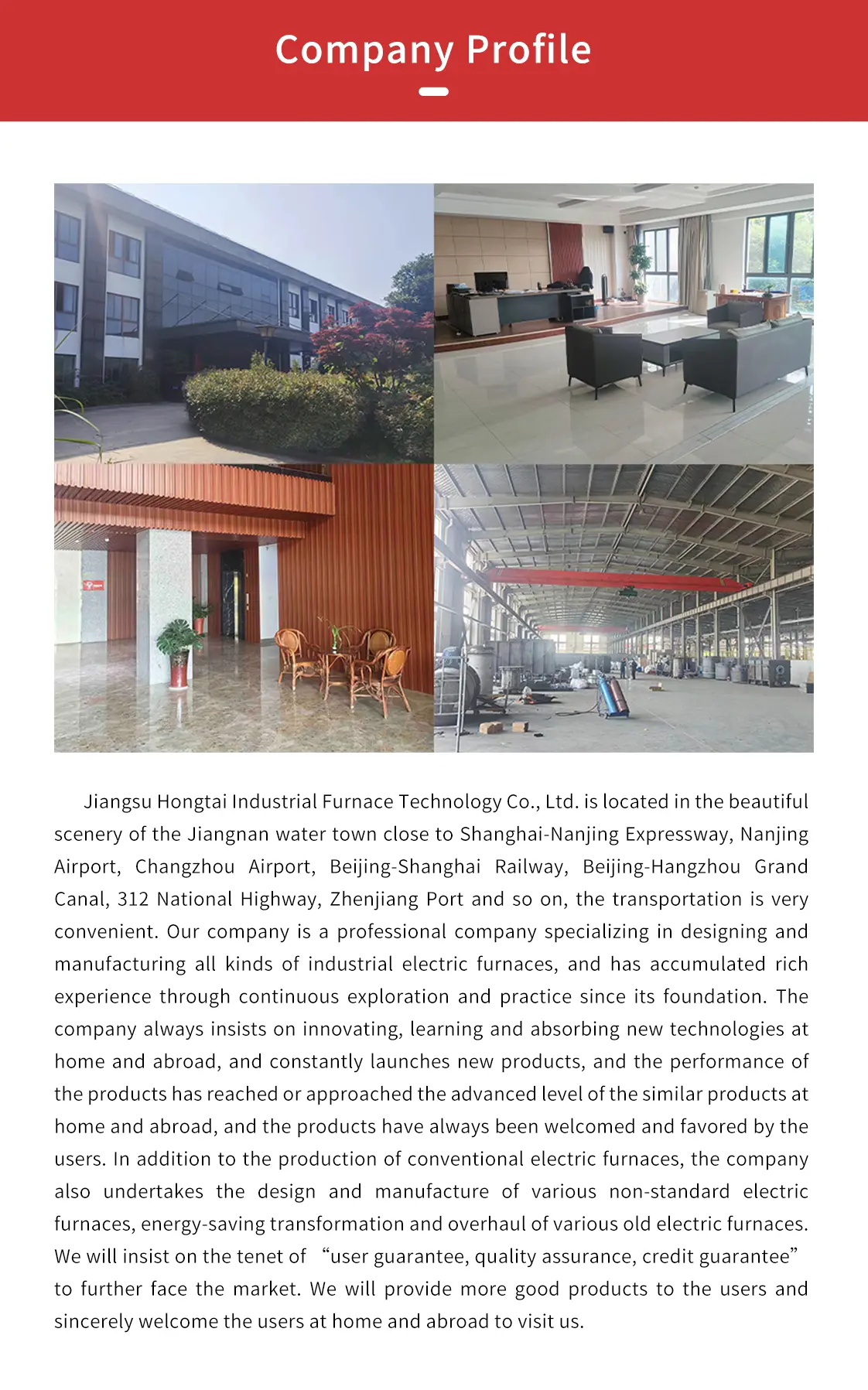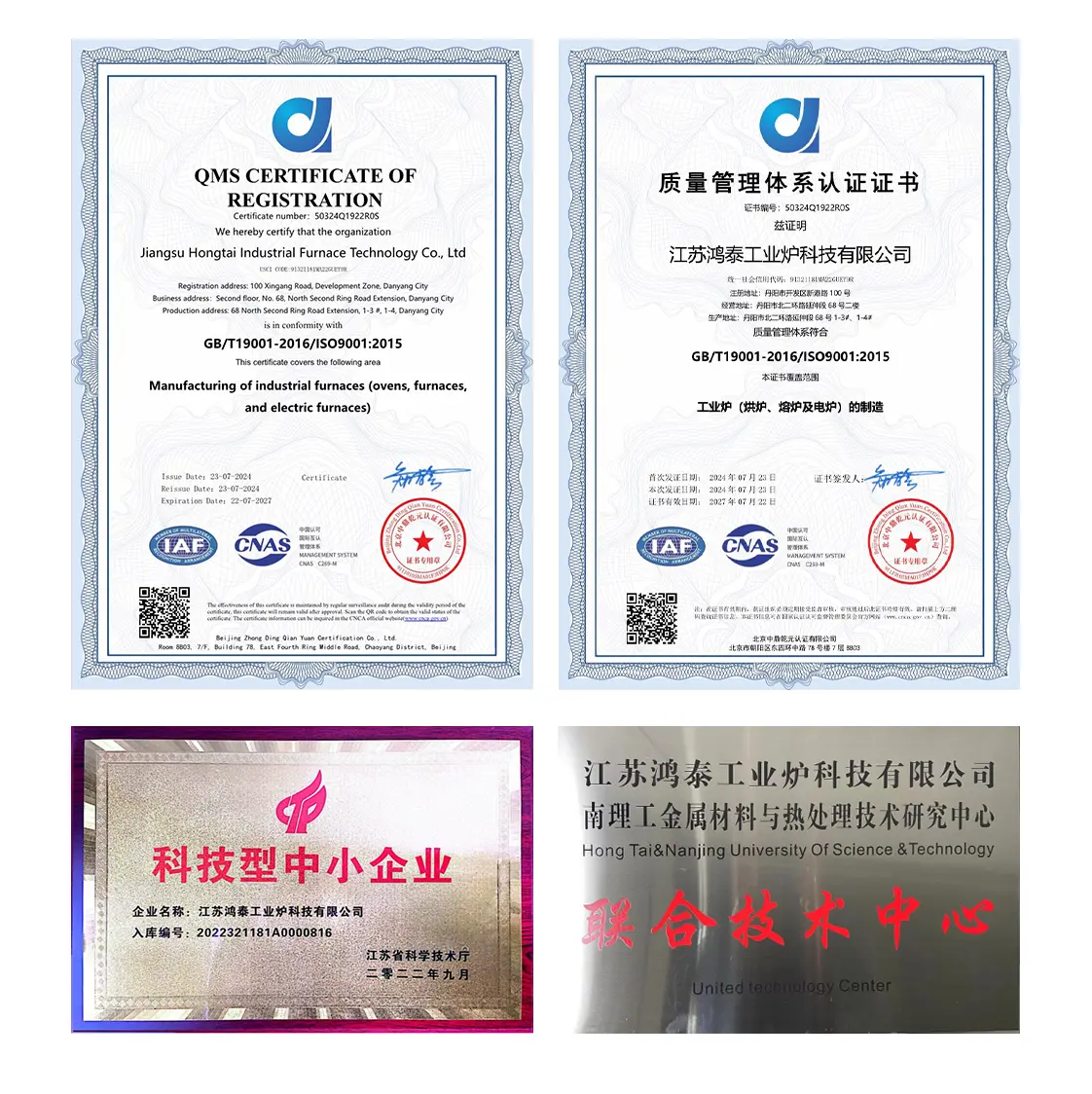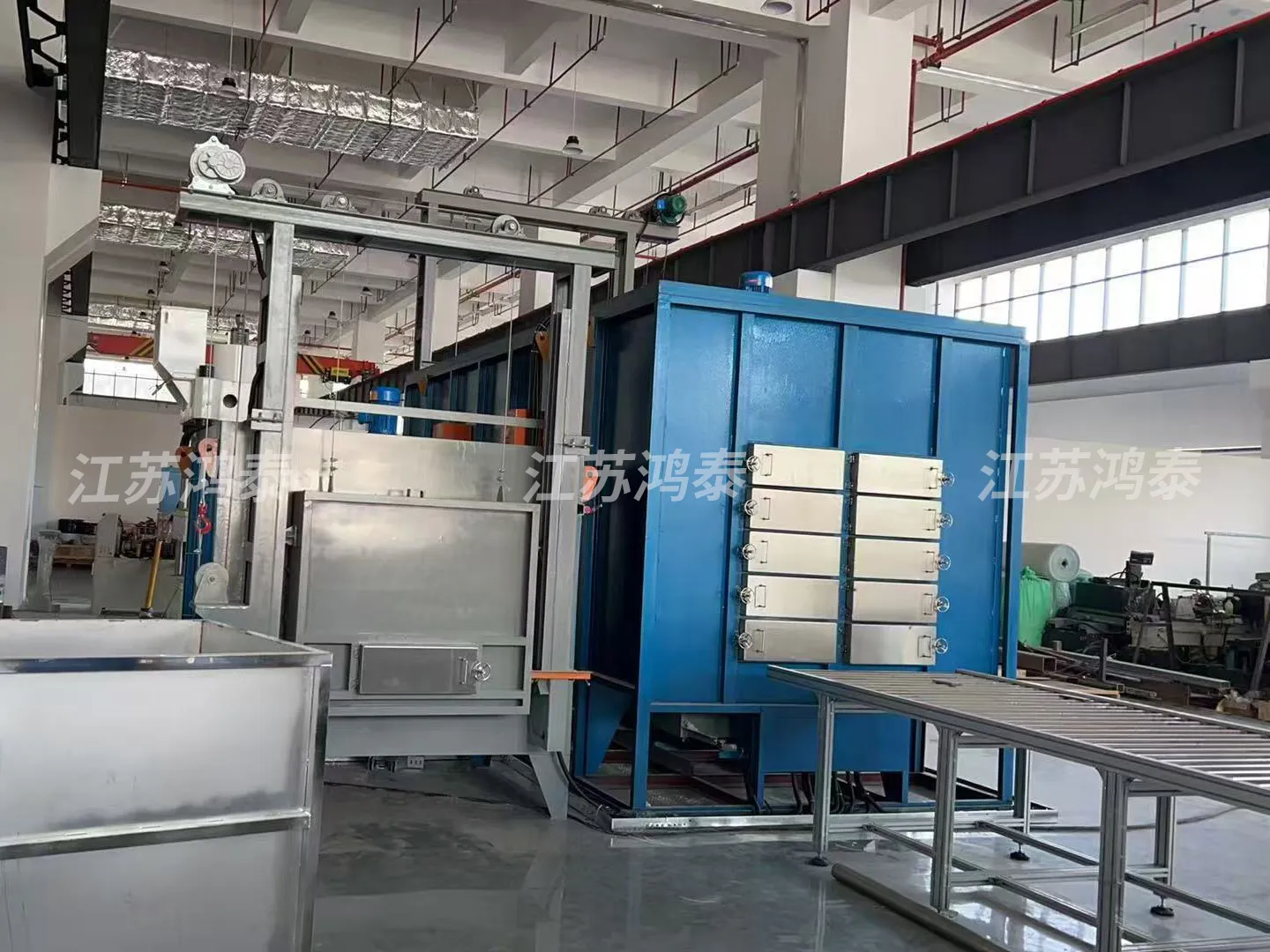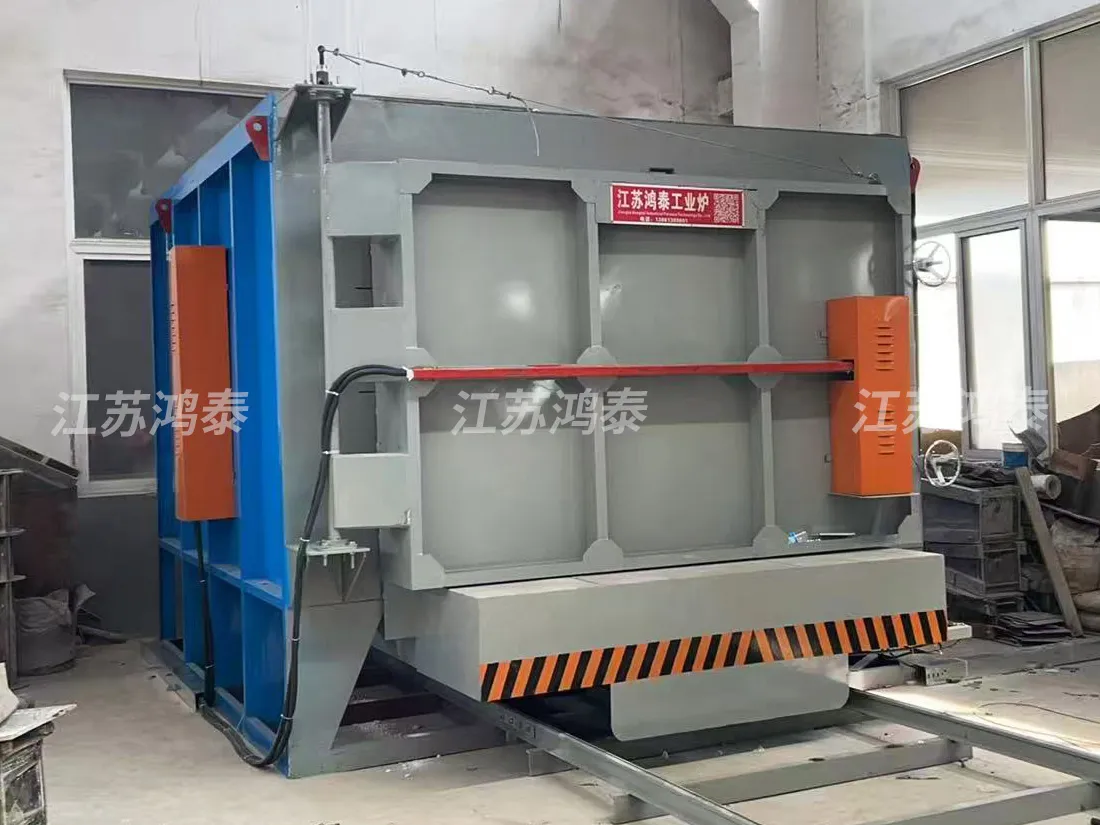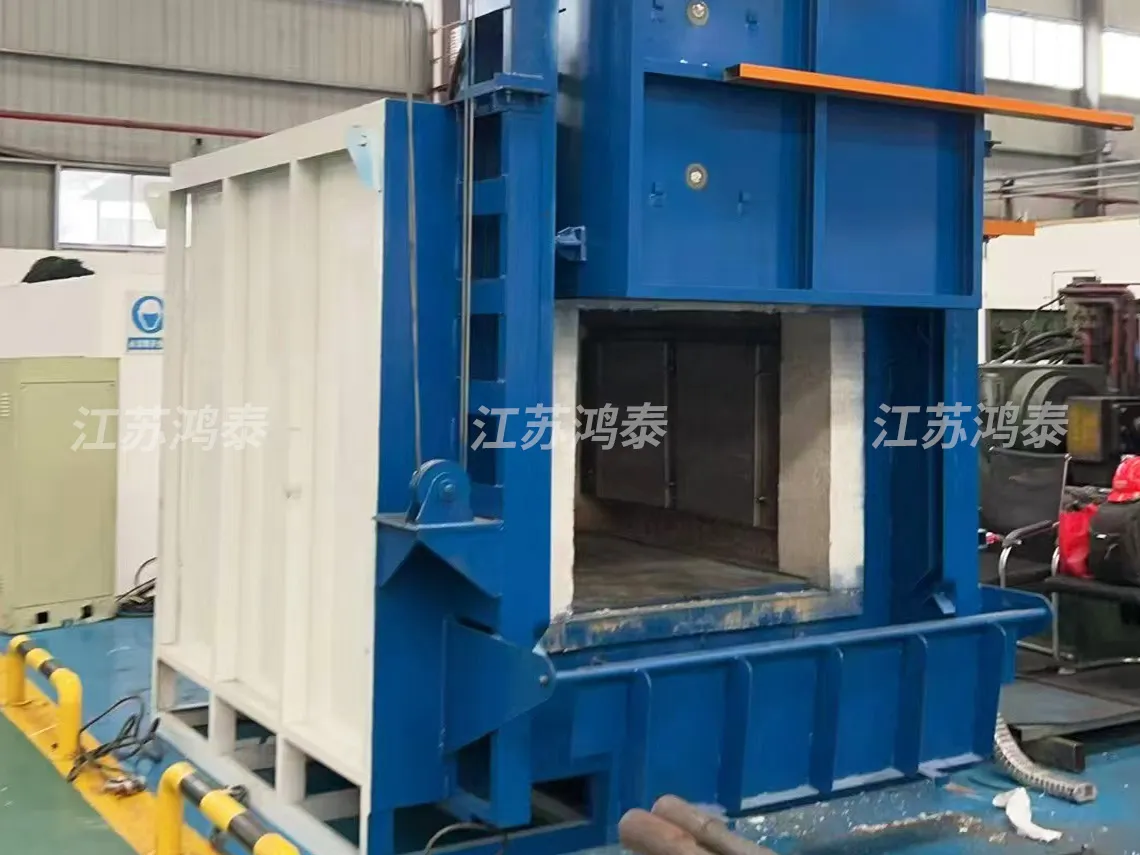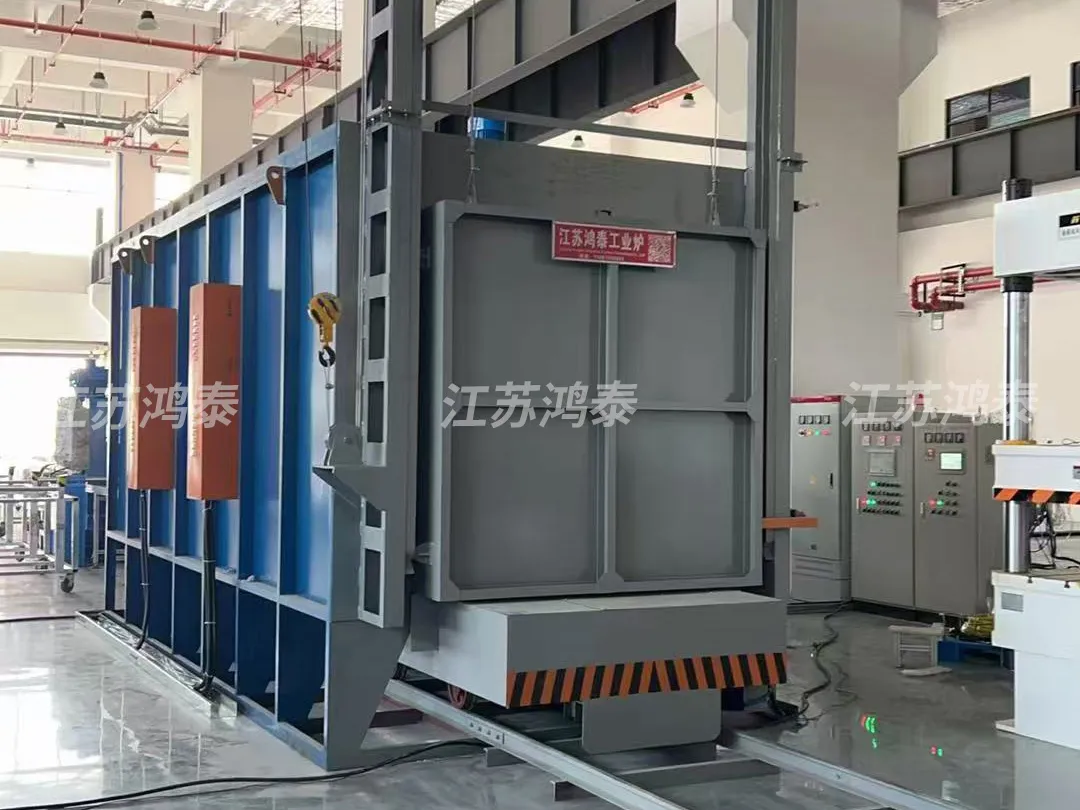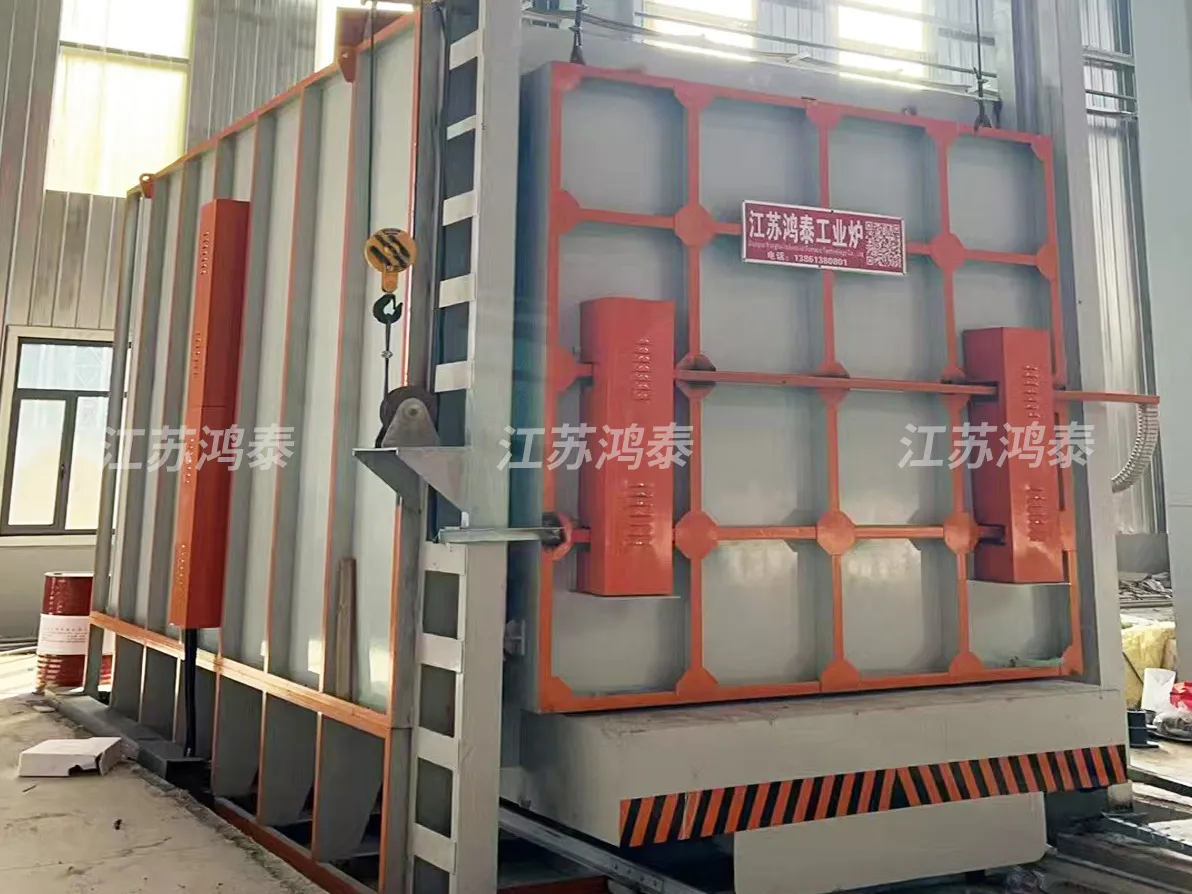- Vacuum furnace & oven
- Annealing Furnace & Oven
- Tempering furnace & oven
-
Carburizing furnace & Ovens
-
Bell Type Furnace
-
Pit Type Furnace & Well Type Furnace
-
Box Furnace & Chamber Furnace
-
Car Bottom Furnace & Bogie Hearth Furnace
-
Nitriding furnace & Ovens
-
Melting furnace & Ovens
- Quenching furnace & Ovens
-
Rapid quenching furnace & Ovens
- Forging furnace & Ovens
- Bright heat treatment furnace & Ovens
Bright Heat Treatment Furnace & Oven
Heat treatment furnace manufacturer,Jiangsu Hongtai Industrial Furnace Technology Co., Ltd
Bogie-type vacuum bright annealing furnace is energy-saving cycle-type operation furnace, super energy-saving structure, using fiber structure, power saving 60%.
Bright Heat Treatment Furnace & Oven
Achieve Flawless, Oxidation-Free Surfaces for Critical Components
Product Introduction
Our Bright Heat Treatment Furnaces & Ovens are meticulously engineered to deliver superior, oxidation-free heat treatment results for a wide range of materials, including stainless steel, copper, and various alloys. These advanced systems are indispensable for applications requiring a bright, clean surface finish without the need for post-treatment cleaning or polishing. By utilizing precisely controlled protective atmospheres (such as hydrogen, dissociated ammonia, or inert gases like argon and nitrogen), these furnaces prevent oxidation, decarburization, and discoloration during annealing, brazing, sintering, and other critical thermal processes. They are widely adopted in industries such as automotive, aerospace, electronics, medical devices, and precision manufacturing, where surface integrity and material properties are paramount.
Core Advantages for Uncompromised Surface Quality
- Exceptional Brightness: Achieves mirror-like, oxidation-free surfaces, eliminating the need for costly and time-consuming post-treatment cleaning.
- Precise Atmosphere Control: Advanced gas management systems ensure optimal protective atmosphere composition, preventing material degradation and surface defects.
- Uniform Temperature Distribution: Multi-zone heating and advanced insulation design guarantee excellent temperature uniformity throughout the working chamber, ensuring consistent material properties.
- Versatile Process Capabilities: Suitable for bright annealing, bright brazing, bright sintering, and other specialized heat treatment processes for various metals and alloys.
- Energy Efficiency: Optimized heating elements, insulation, and atmosphere circulation systems minimize energy consumption and operational costs.
- Automated Control Systems: Integrated PLC control with intuitive HMI, recipe management, and comprehensive data logging for precise process control and traceability.
- Robust Construction: Built with high-quality materials and components for long-term reliability, minimal maintenance, and extended service life in demanding industrial environments.
Technical Specifications
| Parameter | Unit | Range/Value | Notes |
|---|---|---|---|
| Maximum Working Temperature | °C | 800 - 1200 | Customizable based on application |
| Working Atmosphere | - | Hydrogen, Dissociated Ammonia, Nitrogen, Argon | Selectable based on material and process |
| Atmosphere Purity | % | >99.999 | Ensures oxidation-free environment |
| Rated Power | KW | 30 - 300 | Efficient heating systems |
| Working Chamber (W×H×L) | mm | Customizable | Batch or continuous configurations |
| Temperature Uniformity | °C | ±3 (typical) | Multi-zone heating control |
| Control Accuracy | °C | ±1 | Advanced PID control |
| Cooling Method | - | Water-cooled jacket, Forced gas cooling | Rapid cooling for bright finish |
| Control System | - | PLC + Touchscreen HMI | Advanced automation and data logging |
| Safety Features | - | Atmosphere interlocks, Over-temperature protection, Emergency shutdown | Ensures safe operation |
Working Principle
Bright heat treatment furnaces operate on the principle of processing materials in a precisely controlled protective atmosphere to prevent surface oxidation, decarburization, and discoloration during high-temperature thermal cycles. Unlike conventional furnaces that expose workpieces to air, these furnaces maintain an oxygen-free or low-oxygen environment, typically using gases such as hydrogen, dissociated ammonia (a mixture of hydrogen and nitrogen), pure nitrogen, or argon. This inert or reducing atmosphere reacts with any residual oxygen or surface oxides on the material, effectively cleaning the surface and ensuring a bright, metallic finish.
The process begins with loading the workpieces into the furnace chamber, which is then purged to remove air. The protective atmosphere is introduced and maintained at a slight positive pressure to prevent air ingress. Heating elements, often made of high-temperature resistant materials like molybdenum or graphite, raise the chamber temperature to the desired processing level. Precise temperature control, achieved through advanced PID controllers and multiple thermocouples, ensures uniform heating and consistent metallurgical results. After the soaking period, the workpieces are cooled within the same protective atmosphere, often using water-cooled jackets or forced gas circulation systems, to maintain the bright finish and achieve desired material properties without re-oxidation.
The integrity of the protective atmosphere is crucial. Modern bright heat treatment furnaces are equipped with sophisticated gas management systems, including flow meters, pressure sensors, and gas analyzers, to continuously monitor and control the atmosphere composition and purity. Safety interlocks are integrated to prevent operation under unsafe atmospheric conditions, especially when using flammable gases like hydrogen. The entire process, from purging to cooling, is typically automated via a PLC-based control system, allowing for precise recipe management, real-time monitoring, and comprehensive data logging for quality assurance and traceability.
Process Flow
Loading & Sealing
Workpieces are loaded into the furnace chamber, which is then sealed to ensure atmospheric integrity.
Purging & Atmosphere Introduction
Chamber is purged to remove air, followed by the introduction of a controlled protective atmosphere (e.g., hydrogen, nitrogen).
Heating & Soaking
Workpieces are heated to the target temperature and held for a specified duration under the protective atmosphere.
Cooling & Unloading
Controlled cooling within the protective atmosphere to maintain brightness, followed by safe unloading of finished parts.
Solving Customer Pain Points
Eliminating Post-Treatment Cleaning
Our furnaces deliver bright, oxidation-free surfaces directly, significantly reducing or eliminating the need for costly and time-consuming post-treatment cleaning processes like pickling or polishing.
Preventing Material Degradation
Precise atmosphere control prevents oxidation, decarburization, and other surface defects, preserving the original material properties and surface integrity of critical components.
Ensuring Consistent Quality
Superior temperature uniformity and atmosphere management ensure consistent heat treatment results across all batches, leading to predictable material performance and reduced scrap rates.
Optimizing Production Efficiency
Automated processes, reduced post-treatment steps, and reliable operation contribute to higher throughput and overall production efficiency, lowering operational costs.
Handling Diverse Materials
Our versatile systems can process a wide range of materials, including various grades of stainless steel, copper, and specialized alloys, offering flexibility for diverse manufacturing needs.
Meeting Strict Industry Standards
Designed to meet stringent industry requirements for surface finish and material properties, our furnaces help manufacturers comply with aerospace, medical, and automotive standards.
Customer Success Stories
A leading manufacturer of medical implants achieved a 30% reduction in post-processing costs and a significant improvement in surface quality after integrating our bright annealing furnace, ensuring compliance with strict biocompatibility standards.
Customized Services
We offer comprehensive customization services, from initial design and engineering to manufacturing, installation, and ongoing technical support. Our solutions are tailored to meet your specific production requirements, including chamber dimensions, atmosphere types, heating capacities, and integration with existing production lines, ensuring optimal performance and seamless operation.
Related Keywords
bright heat treatment furnace, bright annealing furnace, bright brazing oven, oxidation-free heat treatment, stainless steel annealing, copper brazing, continuous bright furnace, batch bright furnace, protective atmosphere furnace, hydrogen furnace, nitrogen furnace, high-temperature bright furnace, industrial bright furnace
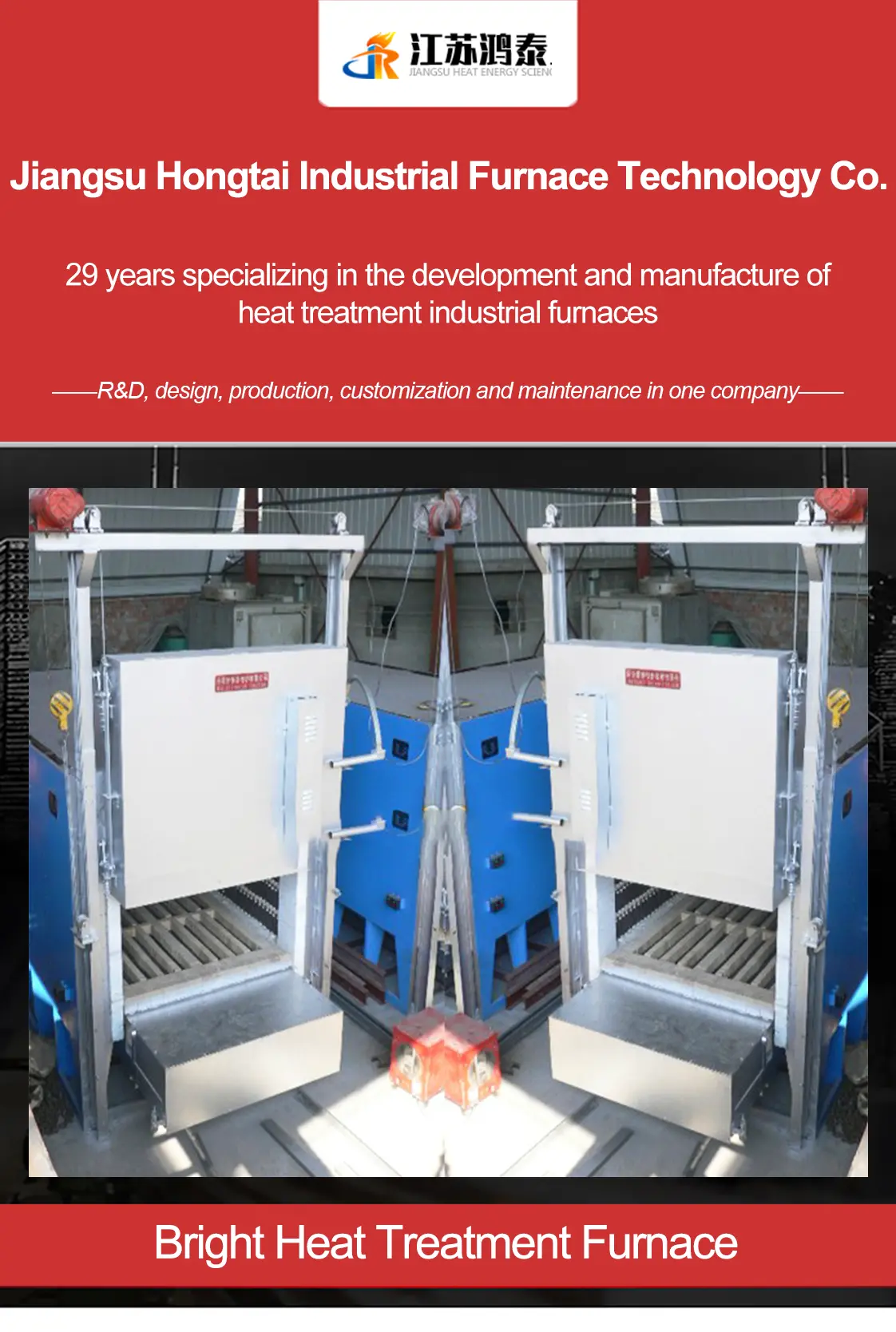
Bright Heat Treatment Oven Technical Profile
Operating Principle
Bright heat treatment furnaces & ovens create oxygen-free environments through sealed chambers flooded with reducing gas atmospheres (typically H₂-N₂ mixtures). The hydrogen actively reduces surface oxides while nitrogen provides inert shielding, enabling metals to undergo thermal processing without discoloration. Precision radiant heating elements maintain uniform temperature fields across the workload, with rapid cooling achieved through controlled gas quenching that preserves metallurgical integrity.
Process Essentials
- Surface Preservation : Gas chemistry eliminates scaling by interrupting oxidation pathways
- Thermal Precision : Multi-zone heat distribution prevents thermal stress distortion
- Cooling Control : Adjustable gas flow kinetics tailor phase transformation rates
Technology-Value Nexus
This process revolutionizes manufacturing by:
① Eliminating downstream processing - Removes 90% of traditional pickling/grinding operations
② Enabling material innovation - Facilitates heat treatment of oxidation-sensitive alloys (e.g. titanium dental implants)
③ Accelerating sustainability - 45% less energy than vacuum furnace alternatives
Industry Implementations
Brief introduction:
Bogie-type vacuum bright annealing furnace is energy-saving cyclic operation furnace, super energy-saving structure, using fiber structure, power saving 60%. Production using composite high alumina ceramic nail group, cart anti-impact sealing bricks, automatic sealing cart and furnace door, integrated even rail, no foundation installation, placed on the level ground can be used.
Mainly used for copper pipe, copper machine parts, etc. in the vacuum heat treatment with.
Structure:
Furnace shell has steel plate and section steel welded together, the bottom of the furnace body and the cart light rail is connected as one, users do not need foundation installation, only need to be put on the level cement ground can be used.
Furnace lining with all-fiber structure, relative to the brick hearth energy-saving 60% or so, the use of long-fiber spiked carpet as raw materials, the use of special equipment made of 300 × 300 × 300 specifications, and in the processing of the amount of compression left to ensure that the module in the completion of the masonry, each piece of ceramic fiber blocks in different directions of the expansion, so that the modules squeezed each other into a gapless whole, to achieve the effect of complete heat storage, but also the construction of the products Convenient and quick, can be directly fixed to the furnace shell steel plate stainless steel anchor round nail.
Compared with other products, it has the advantages of low thermal conductivity, low heat capacity, excellent corrosion performance, excellent thermal stability and thermal shock resistance, adiabatic, and the anchors are set on the cold side of the furnace body, which improves the fiber's high-temperature strength.
Heating element using high-temperature resistance alloy wire wound into ribbons and spirals, respectively, hanging in the side of the furnace, the door, the back wall and placed on the cart shelves on the wire tiles, and high alumina ceramic nails fixed.
The trolley is equipped with a pressure-resistant and high-temperature cast steel furnace floor, above which a vacuum furnace canister is set aside to place the workpiece. In order to prevent the oxidized skin generated by the heating of the workpiece through the gap between the furnace floor falls into the heating element around the heating element and cause damage to the heating element, so the furnace floor and the furnace body contact with the insert contact. In order to ensure normal use, it is necessary to often blowing cart furnace bottom plate below the skin of oxidation, generally once a week to blow, blowing the furnace bottom plate lifting, compressed air will be the resistance wire groove of the oxidized skin debris blowing clean, pay attention to prevent the oxidized skin stuck in the wire caused by the short-circuit.
Furnace door is installed on the trolley, integrated with the furnace tank, using cart power compression type, this structure of the compression device so that no friction between the fiber plane on the door and the mouth of the furnace cotton, and a limit device to control the stroke, with good performance, long mission characteristics.
The frame of the cart is made of welded steel profiles, and its rigidity ensures that it will not be deformed under full load. Inside with refractory brick masonry, easy to collision parts and load-bearing parts with heavy brick masonry, to enhance the structural strength of the furnace lining, the walking cart adopts the self-propelled structure, driven by the speed reducer drive sprocket wheel walking on the track.
The sealing of the trolley adopts automatic labyrinth structure and soft-contact double sealing, the cart enters into the furnace through the action of cam and roller inclined surface, and then automatically rises up to be sealed. When the cart is opened, the sealing groove falls down automatically, and the sealing sand in the sealing groove does not need to be added frequently after it is filled up. Cart open out, furnace door lift are electric control, equipped with electromagnetic brake, can prevent inertia impact furnace, and chain control, that is, slightly open the door, automatically cut off the heating element, and at the same time to restore the cart walking mechanism power. After the door is closed in place, the power supply of the traveling mechanism of the trolley is automatically cut off and the power supply of the heating element is restored at the same time.
